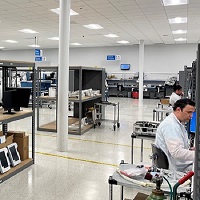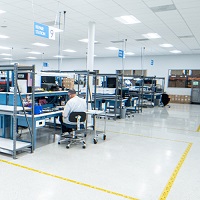
How Quest Uses Onshoring to Counter the Shipping Crisis
One of the biggest challenges seen today are supply chain delays—more specifically, being unable to efficiently ship products back overseas that may require service or repair.
Originally brought on by a series of pandemic-related events, the shipping crisis is a phenomenon to be considered. This global container shortage crisis has caused a domino effect throughout the entire supply chain, disrupting the standard flow of trade.
Traditionally, many markets have relied on lower-cost countries to send products back to get serviced and repaired. These offshore methods typically require a long lead time, shipping via container and returning through that cycle. This model typically requires a locally managed inventory to pacify customers needing loaners or replacement units for more critical applications.
At Quest, however, we can counter the shipping crisis for many of our original equipment manufacturer (OEM) clients by implementing onshoring strategies.
What is Onshoring?
Onshoring, also referred to as “domestic outsourcing,” is the process of outsourcing production from a large, metropolitan city to a smaller, economical city within national borders. For instance, a company based in San Francisco might onshore its production to Indianapolis.
This is very different from other outsourcing processes, like offshoring. Offshoring is the process of establishing production on another continent.
For example, a United States-based OEM might manufacture their devices in Hong Kong. When those devices need to be serviced or fixed, the OEM sends the device back to the manufacturer’s headquarters, taking upwards of several weeks to be received, evaluated, repaired, and returned.
Naturally, this results in a very high turnaround time, not to mention the additional costs incurred by the customs process.
How Does Onshoring Counter the Shipping Crisis?
Given shipping crisis challenges, the results are a significant lead-lag to get products back to the market and into the hands of the customers.
VP of Quest’s Global Service Solutions, Pasha Arshadi, says that over the past year, he has observed many customers begin to explore onshoring alternatives; shifting from offshore to onshore and nearshore practices, bringing them closer to home base within a regional area. This way, they’re able to shorten cycle times to get the product back and returned to customers quickly.
Onshoring, unlike nearshoring and offshoring, reallocates production to a location within the same country as an organization’s home base. This eliminates the need for freight containers, marine transportation and customs; therefore, evading the shipping crisis and the extended turnaround times companies are facing as a result.
Quest: Your Onshoring Partner
Quest can assist our customers with nearshoring and onshoring strategies by leveraging many of our global service and logistics hubs, and being able to go through a transfer protocol to replicate a service line that may be offshore into any one of the facilities we have.
We have a handful of global locations to best serve our client’s needs, and at any number of sites worldwide, our team of experts can coordinate logistics and repair services to enhance a client’s nearshore or onshore strategy.
By strategically implementing nearshore techniques for our clients, we can decrease expenses while eliminating the physical, cultural, and language barriers that are typically encountered during nearshoring and offshoring.
Read on to learn how nearshoring can positively impact your business or the difference between nearshoring, onshoring, and offshoring.
MAR-925 REV 1.0











